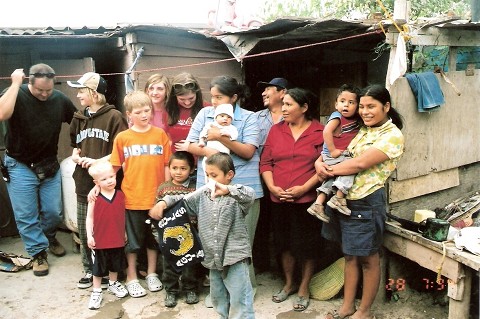Short-term missions should mobilize you for the kingdom

I’ve been doing short-term missions (STMs) for 30 years now as an organizer and participant. I’ve written more articles and essays on the subject than I can count, and for better or for worse, have become something of an authority on the subject.
 My perspective is that the primary reason for participating in an STM is to be mobilized for the Kingdom. The cost is too great and the impact too small to go for other reasons. Now here’s a big admission for an STM practitioner like me to make (drum roll here): Unfortunately, the sad fact is that most STM participants are not mobilized by their experience – it is too brief and their lifestyle habits and the paradigms upon which they are based too entrenched.
My perspective is that the primary reason for participating in an STM is to be mobilized for the Kingdom. The cost is too great and the impact too small to go for other reasons. Now here’s a big admission for an STM practitioner like me to make (drum roll here): Unfortunately, the sad fact is that most STM participants are not mobilized by their experience – it is too brief and their lifestyle habits and the paradigms upon which they are based too entrenched.
So, the question is, “When an STM works, what happens? What is the process whereby STM participants are mobilized for the Kingdom? I offer the following three stages.
Stage 1:
A participant’s heart is broken. For example, perhaps at some point along the way, something she experiences seems so wrong, so unfair, it profoundly impacts her view of the world. I call it “a branding experience.” As a result, the participant comes away with the conviction, “I need to do something about this.”
A week-long STM usually communicates principles like, “There is little correlation between riches and happiness.” From such principles, participants derive action points like, “I have so much and am so fortunate; I need to be more grateful.” If an STM is designed to give participants the opportunity to address significant human need, developing meaningful relationships in the process, some participants can get to Stage 1.
Stage 2:
A participant begins to learn Lordship. Grappling with the cognitive dissonance the STM experience created (usually at some later date, often much later), the participant begins to learn what it means to subordinate her will to God, allowing him to influence or even veto her decisions – particularly those that have been dictated by culture.
This then touches a host of behavioral issues. There is a big difference between a commitment to be nice (which is the net result for 95% of STM participants who feel a mixture of guilt, conviction, and compassion and who make a decision to do something about it), and a radical commitment to Lordship.
Getting to Stage 2 usually requires at least a month or a summer with the participant receiving one-on-one coaching along the way. Both Stages 2 and 3 are a work of grace made possible only through much prayer and sensitive leadership.
Stage 3:
Jesus calls the participant to a specific team, place, or role, or a combination of the three. This may be in full-time ministry or in the workplace, it may be overseas or in the good ol’ USA. The point is that Jesus commissions the person to fulfill a role in the Kingdom.
For me, a commitment to be nice is not a sufficient reason to spend time sponsoring STMs. My goal is to maximize the percentage of participants experiencing stages 1, 2, or 3. I want to see people mobilized for the Kingdom.

I’m aboard with you here, Seth. The more STM’s an individual participates in, the more they ask the question “But is this one week of service enough – isn’t there more out there?” I know that STM’s are what radicalized my faith and made me want to get plugged into advancing His Kingdom as a lifestyle, not just a week-long commitment. I pray that it will do the same for thousands more.
I agree. I know that every trip I have taken has given me more and more hunger to get involved and get messy. I don’t think one experience alone would have changed much, but three trips has made a significant impact.
It is still easy to get back into the old mindset when I begin to get comfortable again.
I hope this trip will touch me in a deeper place that isn’t so easy to cover up. I also hope that taking this step of faith – uprooting my comfortable, predictable, “secure” life will help me to continue on a path of the extraordinary lifestyle that is following Christ.